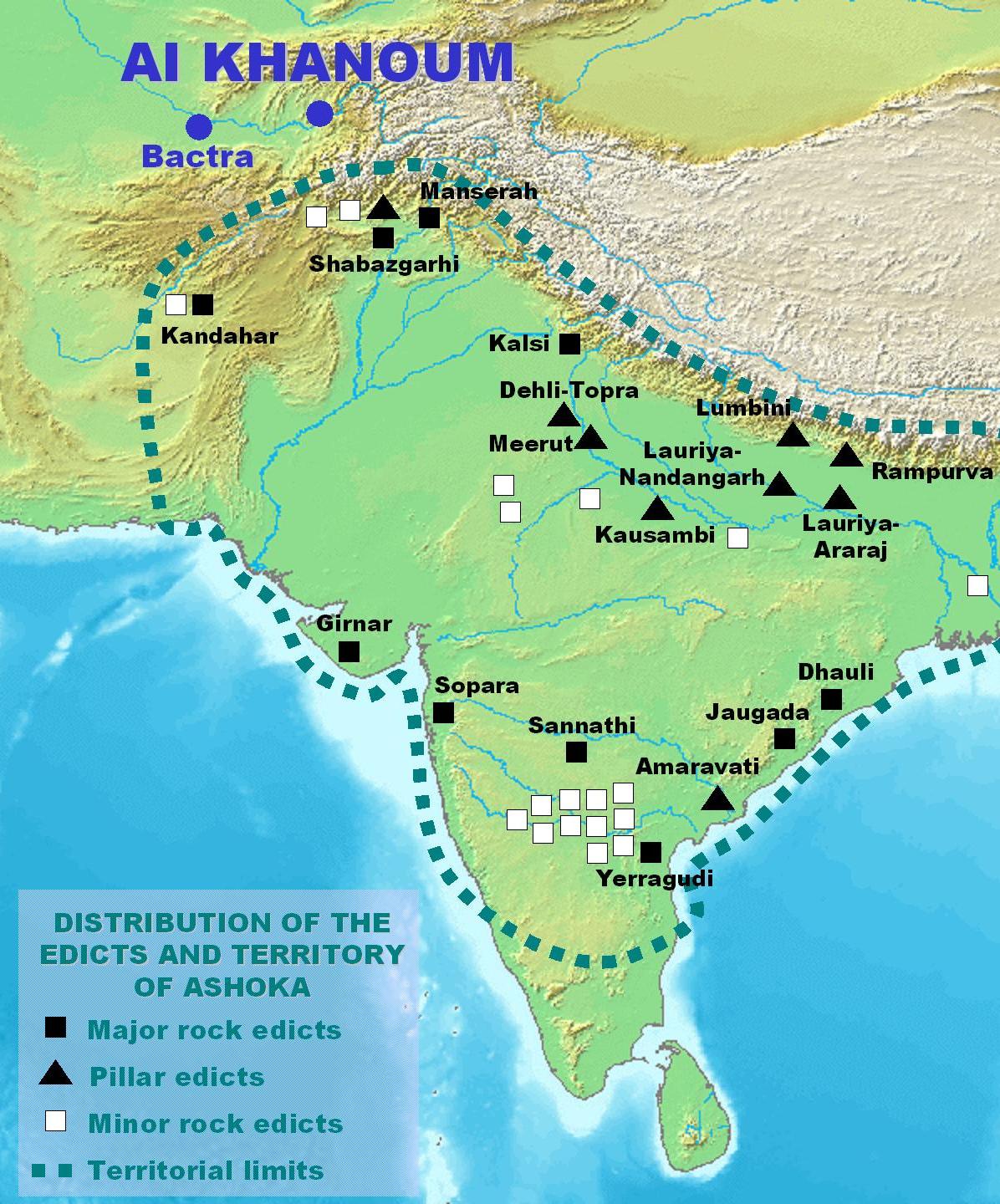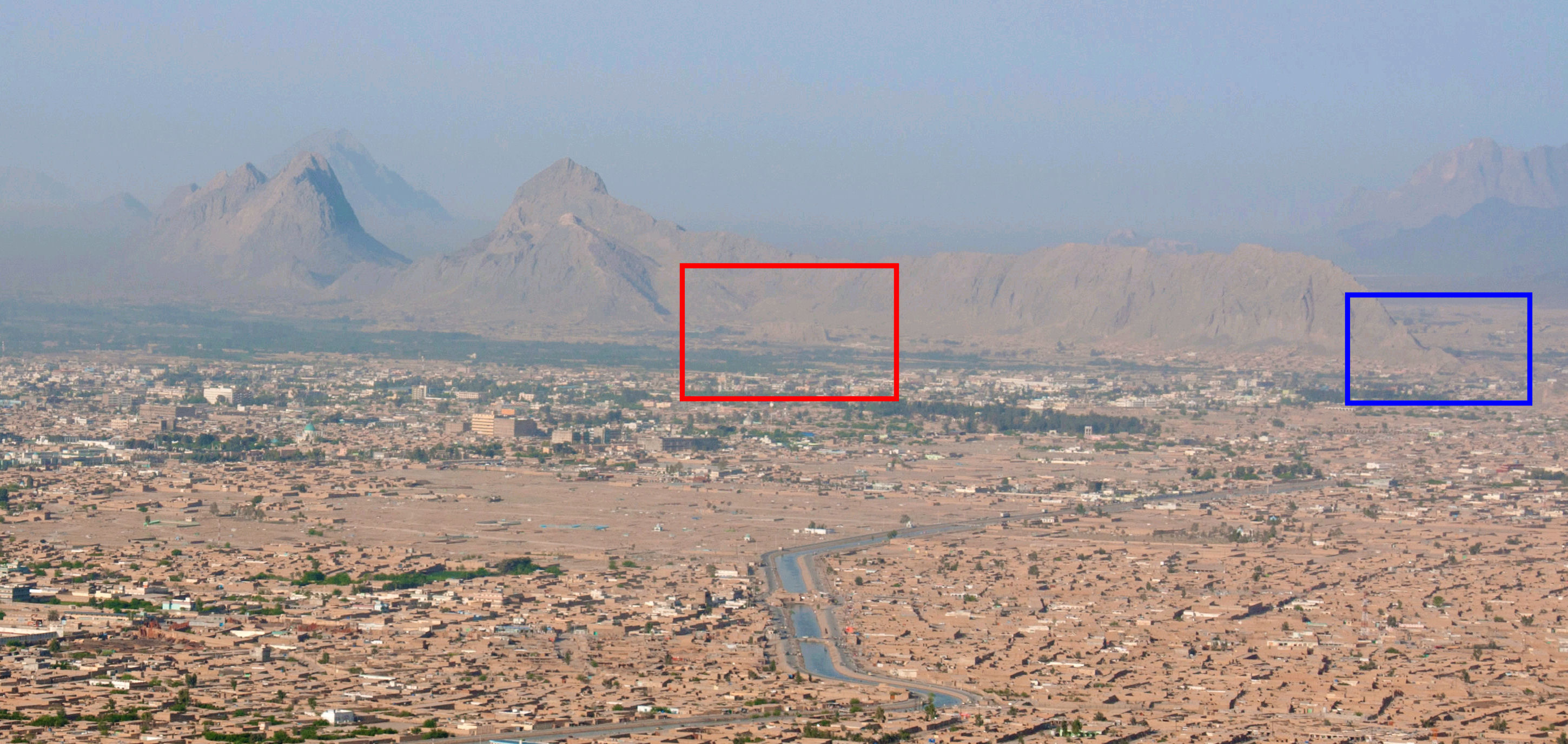Kandahar Greek Edicts of Ashoka on:
[Wikipedia]
[Google]
[Amazon]
The Kandahar Greek Edicts of Ashoka are among the
/ref> The beginning and the end of the fragment are lacking, which suggests the inscription was original significantly longer, and may have included all 14 of Ashoka's Edicts in Greek, as in several other locations in India. The plaque with the inscription was bought in the Kandahar market by the German doctor Seyring, and French archaeologists found that it had been excavated in

 The Edict is a Greek version of the end of the 12th Edicts (which describes moral precepts) and the beginning of the 13th Edict (which describes the King's remorse and conversion after the war in
The Edict is a Greek version of the end of the 12th Edicts (which describes moral precepts) and the beginning of the 13th Edict (which describes the King's remorse and conversion after the war in
 The Kandahar Bilingual Rock Inscription, discovered in 1958, is the other well-known Greek inscription by Ashoka in the area of Kandahar. It was found on the mountainside of the
The Kandahar Bilingual Rock Inscription, discovered in 1958, is the other well-known Greek inscription by Ashoka in the area of Kandahar. It was found on the mountainside of the
The Oxford Handbook of Ancient Greek Religion
', Esther Eidinow,
File:AsokaKandahar.jpg, Kandahar Bilingual Rock Inscription in Greek and Aramaic, by Emperor Ashoka, 3rd century BCE, Kandahar.
File:Kandahar son of Aristonax inscription.jpg, Inscription in Greek by the "son of Aristonax", 3rd century BCE, Kandahar.
File:Kandahar Sophytes Inscription.jpg, Kandahar Sophytos Inscription, 2nd century BCE, Kandahar.
File:Kandahar_fortifications.jpg, Plan of ancient fortifications of Kandahar.
Major Rock Edicts
The Major Rock Edicts of Indian Emperor Ashoka refer to 14 separate major Edicts of Ashoka which are significantly detailed and represent some of the earliest dated rock inscriptions of any Indian monarch. These edicts are preceded chronologica ...
of the Indian Emperor Ashoka (reigned 269-233 BCE), which were written in the Greek language
Greek ( el, label=Modern Greek, Ελληνικά, Elliniká, ; grc, Ἑλληνική, Hellēnikḗ) is an independent branch of the Indo-European family of languages, native to Greece, Cyprus, southern Italy (Calabria and Salento), southern Al ...
and Prakrit language
The Prakrits (; sa, prākṛta; psu, 𑀧𑀸𑀉𑀤, ; pka, ) are a group of vernacular Middle Indo-Aryan languages that were used in the Indian subcontinent from around the 3rd century BCE to the 8th century CE. The term Prakrit is usua ...
. They were found in the ancient area of Old Kandahar
Old Kandahar (locally known as Zorr Shaar; ps, زوړ ښار, , Old City, also Shahr-i-Kona in Dari) is a historical section of the city of Kandahar in southern Afghanistan. Many believe that there are hidden ancient treasures buried in and aroun ...
(known as Zor Shar in Pashto
Pashto (,; , ) is an Eastern Iranian language in the Indo-European language family. It is known in historical Persian literature as Afghani ().
Spoken as a native language mostly by ethnic Pashtuns, it is one of the two official languages ...
, or Shahr-i-Kona in Farsi
Persian (), also known by its endonym Farsi (, ', ), is a Western Iranian language belonging to the Iranian branch of the Indo-Iranian subdivision of the Indo-European languages. Persian is a pluricentric language predominantly spoken an ...
) in Kandahar in 1963. It is thought that Old Kandahar
Old Kandahar (locally known as Zorr Shaar; ps, زوړ ښار, , Old City, also Shahr-i-Kona in Dari) is a historical section of the city of Kandahar in southern Afghanistan. Many believe that there are hidden ancient treasures buried in and aroun ...
was founded in the 4th century BCE by Alexander the Great
Alexander III of Macedon ( grc, wikt:Ἀλέξανδρος, Ἀλέξανδρος, Alexandros; 20/21 July 356 BC – 10/11 June 323 BC), commonly known as Alexander the Great, was a king of the Ancient Greece, ancient Greek kingdom of Maced ...
, who gave it the Ancient Greek name Ἀλεξάνδρεια Ἀραχωσίας ( Alexandria of Arachosia).
The extant edicts are found in a plaque of limestone, which probably had belonged to a building, and its size is 45x69.5 cm and it is about 12 cm thick. These are the only Ashoka inscriptions thought to have belonged to a stone building.Une nouvelle inscription grecque d'Açoka, Schlumberger, Daniel, Comptes rendus des séances de l'Académie des Inscriptions et Belles-Lettres Année 1964 Volume 108 Numéro 1 pp. 126-14/ref> The beginning and the end of the fragment are lacking, which suggests the inscription was original significantly longer, and may have included all 14 of Ashoka's Edicts in Greek, as in several other locations in India. The plaque with the inscription was bought in the Kandahar market by the German doctor Seyring, and French archaeologists found that it had been excavated in
Old Kandahar
Old Kandahar (locally known as Zorr Shaar; ps, زوړ ښار, , Old City, also Shahr-i-Kona in Dari) is a historical section of the city of Kandahar in southern Afghanistan. Many believe that there are hidden ancient treasures buried in and aroun ...
. The plaque was then offered to the Kabul Museum
The National Museum of Afghanistan (Dari: موزیم ملی افغانستان, ''Mūzīyam-e mellī-ye Afghānestān''; ps, د افغانستان ملی موزیم, ''Də Afghānistān Millī Mūzīyəm''), also known as the Kabul Museum, is a ...
, but its current location is unknown following the looting of the museum in 1992–1994.
Background
Greek communities lived in the northwest of the Mauryan empire, currently inPakistan
Pakistan ( ur, ), officially the Islamic Republic of Pakistan ( ur, , label=none), is a country in South Asia. It is the world's List of countries and dependencies by population, fifth-most populous country, with a population of almost 24 ...
, notably ancient Gandhara
Gandhāra is the name of an ancient region located in the northwestern region of the Indian subcontinent, more precisely in present-day north-west Pakistan and parts of south-east Afghanistan. The region centered around the Peshawar Vall ...
near the current Pakistani capital of Islamabad
Islamabad (; ur, , ) is the capital city of Pakistan. It is the country's ninth-most populous city, with a population of over 1.2 million people, and is federally administered by the Pakistani government as part of the Islamabad Capital T ...
and in the region of Gedrosia
Gedrosia (; el, Γεδρωσία) is the Hellenization, Hellenized name of the part of coastal Balochistan that roughly corresponds to today's Makran. In books about Alexander the Great and his Diadochi, successors, the area referred to as Gedro ...
, and presently in Southern Afghanistan, following the conquest and the colonization efforts of Alexander the Great around 323 BCE. These communities therefore were significant in the area of Afghanistan during the reign of Ashoka.
Content

 The Edict is a Greek version of the end of the 12th Edicts (which describes moral precepts) and the beginning of the 13th Edict (which describes the King's remorse and conversion after the war in
The Edict is a Greek version of the end of the 12th Edicts (which describes moral precepts) and the beginning of the 13th Edict (which describes the King's remorse and conversion after the war in Kalinga Kalinga may refer to:
Geography, linguistics and/or ethnology
* Kalinga (historical region), a historical region of India
** Kalinga (Mahabharata), an apocryphal kingdom mentioned in classical Indian literature
** Kalinga script, an ancient writin ...
), which makes it a portion of a Major Rock Edict
The Major Rock Edicts of Indian Emperor Ashoka refer to 14 separate major Edicts of Ashoka which are significantly detailed and represent some of the earliest dated rock inscriptions of any Indian monarch. These edicts are preceded chronologica ...
. This inscription does not use another language in parallel, contrary to the famous Kandahar Bilingual Rock Inscription in Greek language and Aramaic, discovered in the same general area.
The Greek language used in the inscription is of a very high level and displays philosophical refinement. It also displays an in-depth understanding of the political language of the Hellenic world in the 3rd century BCE. This suggests the presence of a highly cultured Greek presence in Kandahar at that time.
Implications
The proclamation of this edict in Kandahar is usually taken as proof that Ashoka had control over that part ofAfghanistan
Afghanistan, officially the Islamic Emirate of Afghanistan,; prs, امارت اسلامی افغانستان is a landlocked country located at the crossroads of Central Asia and South Asia. Referred to as the Heart of Asia, it is bordere ...
, presumably after Seleucus I
Seleucus I Nicator (; ; grc-gre, Σέλευκος Νικάτωρ , ) was a Macedonian Greek general who was an officer and successor ( ''diadochus'') of Alexander the Great. Seleucus was the founder of the eponymous Seleucid Empire. In the pow ...
had ceded this territory to Chandragupta Maurya
Chandragupta Maurya (350-295 BCE) was a ruler in Ancient India who expanded a geographically-extensive kingdom based in Magadha and founded the Maurya dynasty. He reigned from 320 BCE to 298 BCE. The Maurya kingdom expanded to become an empi ...
in their 305 BCE peace agreement. The Edict also shows the presence of a sizable Greek population in the area where great efforts were made to convert them to Buddhism. At the same epoch, the Greeks were established in the Greco-Bactrian kingdom
The Bactrian Kingdom, known to historians as the Greco-Bactrian Kingdom or simply Greco-Bactria, was a Hellenistic period, Hellenistic-era Hellenistic Greece, Greek state, and along with the Indo-Greek Kingdom, the easternmost part of the Helleni ...
, and particularly in the border city of Ai-Khanoum, in the northern part of Afghanistan.
Translation
Other inscriptions in Greek in Kandahar
 The Kandahar Bilingual Rock Inscription, discovered in 1958, is the other well-known Greek inscription by Ashoka in the area of Kandahar. It was found on the mountainside of the
The Kandahar Bilingual Rock Inscription, discovered in 1958, is the other well-known Greek inscription by Ashoka in the area of Kandahar. It was found on the mountainside of the Chil Zena
Chil Zena ("Forty steps"), also Chilzina or Chehel Zina, is a mountainous outcrop at the western limit of the city of Kandahar. Forty stone steps lead to the top of the outcrop, hence its name. It gives a commanding view on the city of Kandahar. ...
outcrop on the western side of the city of Kandahar.
Two other inscriptions in Greek are known at Kandahar. One is a dedication by a Greek man who names himself "son of Aristonax" (3rd century BCE). The other is an elegiac composition by Sophytos son of Naratos (2nd century BCE).The Oxford Handbook of Ancient Greek Religion
', Esther Eidinow,
Julia Kindt
Julia Kindt (born 1975) is an academic and writer who specialises in ancient Greek history and religion. She is a professor at the Department of Classics and Ancient History at the University of Sydney, Australia.
Career
Kindt graduated from ...
, Oxford University Press, 2015
See also
*Edicts of Ashoka
The Edicts of Ashoka are a collection of more than thirty inscriptions on the Pillars of Ashoka, as well as boulders and cave walls, attributed to Emperor Ashoka of the Maurya Empire who reigned from 268 BCE to 232 BCE. Ashoka used the expres ...
* Gandharan Buddhism
* Greco-Buddhism
Greco-Buddhism, or Graeco-Buddhism, is the cultural syncretism between Hellenistic culture and Buddhism, which developed between the fourth century BC and the fifth century AD in Gandhara, in present-day north-western Pakistan and parts of nort ...
* Indo-Greek Kingdom
* Kandahar Bilingual Rock Inscription
* List of Edicts of Ashoka
The following is an overview of Edicts of Ashoka, and where they are located.
Minor Rock Edict
*Kandahar, Afghanistan
*Lampaka, Afghanistan
* Bahapur, Delhi
*Bairat, near Jaipur, Rajasthan
*Bhabru, second hill at Bairat, Rajasthan
*Gujarra, ne ...
* Pillars of Ashoka
References
{{Central Asian history Archaeological discoveries in Afghanistan Edicts of Ashoka Kandahar Greek inscriptions